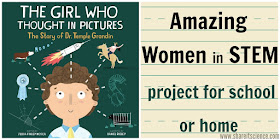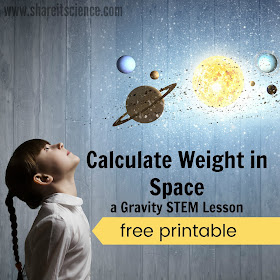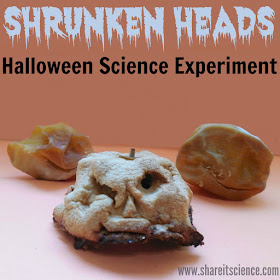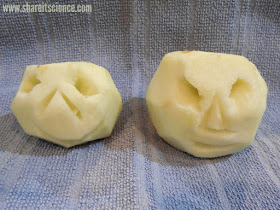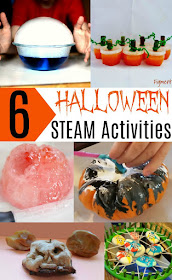In addition to sharing this new book with you, I have included a free "Amazing Women in STEM Research" printable that will be perfect for science and language arts projects in the elementary classroom or with the kids at home. To get you started on your project, also included in this post is a list of inspiring women in STEM with accompanying children's book suggestions.
This post contains affiliate links, meaning I will receive a small commission (at no additional cost to you) if you make a purchase after clicking a product link. Please see disclosures page for more details.
Temple Grandin, an Amazing Woman in STEM
I was very excited to receive my review copy of The Girl Who Thought in Pictures . I love so many things about this book! I love that The Girl Who Thought in Pictures is written in rhyming text, it makes for a lovely read aloud. The illustrations and the way the text is laid out is visually appealing to children as well. The book does an excellent job of describing some tough topics, Dr. Grandin's childhood, her autism diagnosis and how through it all she found things she loved and ways to become successful.
I think it is so important for children to find relatable role models in the sciences and The Girl Who Thought in Pictures does such a great job of illustrating Temple Grandin's signature quotes: "Different, not less." and "The world needs all kinds of minds." I think that all kids most likely experience feeling like they don't fit in at some point in their life, and it is wonderful for them to hear the message that even when you are different, you are needed, you can find supportive people, you can learn what works for you, and you can find success.
As well as a great read-aloud story, the book includes a timeline of Temple Grandin's life, a letter from Temple Grandin, highlights from an interview and detailed biographical information. It could definitely be used as a resource in an elementary biography or research project.

Here is a sneak peek:
I also love that this is just one of two books depicting a strong female role model in the sciences. The second book in the new Amazing Scientists book series is The Doctor with an Eye for Eyes: The Story of Dr. Patricia Bath, a groundbreaking ophthalmologist. I'm excited to see future additions to this book series!

Amazing Women in STEM Research Printable
Use this free 2-page "Amazing Women in STEM Research" printable to get your students or kids at home started on a research or biography project featuring a notable women in a STEM field. The list of women and related children's books below will have you well on your way.
Women in STEM
In addition to Temple Grandin and Patricia Bath, the following is a list of female scientists, mathematicians, computer coders, and engineers. No doubt you'll know some of these names, but others will most likely be new. They are all fascinating people! Accompanying each woman is a list of children's books about them.
Mary Anning (1799-1847)
An English fossil hunter and paleontologist, discovered a fantastic source of sea fossils from the Jurassic period.Learn more:
- Mary Anning's Curiosity
- Mary Anning: The Girl Who Cracked Open the World
- Stone Girl Bone Girl: The Story of Mary Anning of Lyme Regis
- The Fossil Girl
Elizabeth Blackwell (1821-1910)
The first woman to receive a medical degree in the United States, and an advocate for future female doctors.Learn more:
- Elizabeth Blackwell: Girl Doctor (Childhood of Famous Americans)
- Elizabeth Blackwell: America's First Woman Doctor
- Who Says Women Can't Be Doctors? The Story of Elizabeth Blackwell
Annie Jump Cannon (1863-1941)
An American astronomer whose work cataloguing the stars led to the system of modern stellar classification.Learn more:
Rachel Carson (1907-1964)
Marine biologist, conservationist and writer, her influential book Silent Spring waned of the use of chemicals like DDT on the environment.Learn more:
- Rachel Carson and Her Book That Changed the World
- Who Was Rachel Carson?
- Rachel Carson: Pioneer of Ecology (Women of Our Time)
Eugenie Clark (1922-2015)
American ichthyologist known as "The Shark Lady", increased our knowledge of sharks and other fish, as well as worked to improve shark's negative reputation.Learn more:
- Shark Lady: The True Story of How Eugenie Clark Became the Ocean's Most Fearless Scientist
- Swimming with Sharks: The Daring Discoveries of Eugenie Clark
- Adventures of the Shark Lady: Eugenie Clark Around the World
- The Lady and the Sharks
Anna Botsford Comstock (1854-1930)
American conservationist, teacher and artist, was a pioneer in the nature study movement.Learn more:
Marie Curie (1867-1934)
Polish physicist and chemist who completed pioneering work in the field of radioactivity with her husband, Pierre. Won Nobel prizes in Chemistry and Physics.Learn more:
- Marie Curie for Kids: Her Life and Scientific Discoveries, with 21 Activities and Experiments
- Marie Curie (Little People, Big Dreams)
- Who Was Marie Curie?
Sylvia Earle (1935- )
American marine biologist, explorer, author, lecturer and National Geographic explorer-in-residence.Learn more:
- Sylvia Earle: Ocean Explorer (Women in Conservation)
- Life in the Ocean: The Story of Oceanographer Sylvia Earle
Rosalind Franklin (1920-1958)
Molecular biologist who was responsible for much of the research and understanding of the structure of DNA, despite the findings being published by James Watson and Francis Crick first.Learn more:
Jane Goodall (1934- )
British primatologist, the world's leading expert on chimpanzees, ethologist, anthropologist and UN Messenger of Peace. Also the founder of the Jane Goodall Institute and the Roots and Shoots program.Learn more:
- I am Jane Goodall (Ordinary People Change the World)
- Who Is Jane Goodall
- The Watcher: Jane Goodall's Life with the Chimps
- Me...Jane
Margaret Hamilton (1936- )
American computer scientist and systems engineer. As Director of the Software Engineering Division of the MIT Instrumentation Laboratory she helped develop software for the Apollo space missions.Learn more:
- Space Engineer and Scientist Margaret Hamilton (STEM Trailblazer Bios)
- Margaret and the Moon: How Margaret Hamilton Saved the First Lunar Landing
Grace Hopper (1906-1992)
Pioneer of computer programming, a computer scientist and United States Navy admiral.Learn more:
- Grace Hopper: Queen of Computer Code
- Mathematician and Computer Scientist Grace Hopper (STEM Trailblazer Bios)
- The Girl Who Could Talk to Computers - An Inspirational Tale about Grace Hopper (The Girls Who Could)
Mae Jemison (1956- )
NASA astronaut, engineer and physician. The first African-American woman to travel in space.Learn more:
- Mae Jemison (Rookie Biographies)
- The Girl Who Could Dance in Outer Space: An Inspirational Tale About Mae Jemison (The Girls Who Could)
- Astronaut Mae Jemison (STEM Trailblazer Bios)
Katherine Johnson (1918- )
African-American mathematician, or human calculator, who was critical to early NASA missions, such as Project Mercury and Apollo 11.Learn more:
- NASA Mathematician Katherine Johnson (STEM Trailblazer Bios)
- Katherine Johnson (You Should Meet)
- Hidden Figures Young Readers Edition
Margaret E. Knight (1838-1914)
Called the "most famous 19th-century inventor" known for the flat-bottomed paper bag.Learn more:
- Margaret Knight: Girl Inventor
- In the Bag!: Margaret Knight Wraps it Up (Great Idea Series)
- Marvelous Mattie
Henrietta Leavitt (1868-1921)
American astronomer who discovered relationship between the luminosity and the period of Cepheid variable stars. Although she didn't get much credit during her lifetime for her discovery, it helped future astronomers measure the distance between Earth and other galaxies.Learn more:
- Look Up!: Henrietta Leavitt, Pioneering Woman Astronomer
- Miss Leavitt's Stars: The Untold Story of the Woman Who Discovered How to Measure the Universe
Ada Lovelace (1815-1852)
English mathematician and writer, known for being the first "computer programmer" as she created the first algorithm intended to be carried out by the first proposed computer.Learn more:
- Ada Lovelace, Poet of Science: The First Computer Programmer
- Ada's Ideas: The Story of Ada Lovelace, the World's First Computer Programmer
- Ada Byron Lovelace and the Thinking Machine
- Ada Lovelace (Little People, Big Dreams)
Caitlin O'Connell-Rodwell (1965- )
World renowned elephant expert, instructor at Stanford University Medical School, scientific consultant, author and co-founder of Utopia Scientific.Learn more:
Maria Merian (1647-1717)
German naturalist, entomologist and scientific illustrator.Learn more:
- The Girl Who Drew Butterflies: How Maria Merian's Art Changed Science
- Summer Birds: The Butterflies of Maria Merian
- Maria Merian's Butterflies
Sally Ride (1951-2012)
American physicist and astronaut, the first American woman in space!Learn more:
- Sally Ride: A Photobiography of America's Pioneering Women in Science
- Who Was Sally Ride?
- When I Grow Up: Sally Ride (Scholastic Reader Level 3)
- Sally Ride: The First American Woman in Space
Marie Tharp (1920-2006)
American geologist and cartographer, who along with Bruce Hezeen, completed the first scientific map of the entire ocean floor.Learn more:
Collections about Women in STEM
- Finding Wonders: Three Girls Who Changed Science
- Women in Science: 50 Fearless Pioneers Who Changed the World
- Trailblazers: 33 Women in Science Who Changed the World
Buy a Book and Help a Good Cause
You may not be aware of this, but when you purchase a book published by The Innovation Press, like The Girl Who Thought in Pictures, you are not only getting a great book for the children in your life, but also helping others. For every 10 books sold, The Innovation Press donates one book to First Book, getting books into the hands of kids and schools in need.

